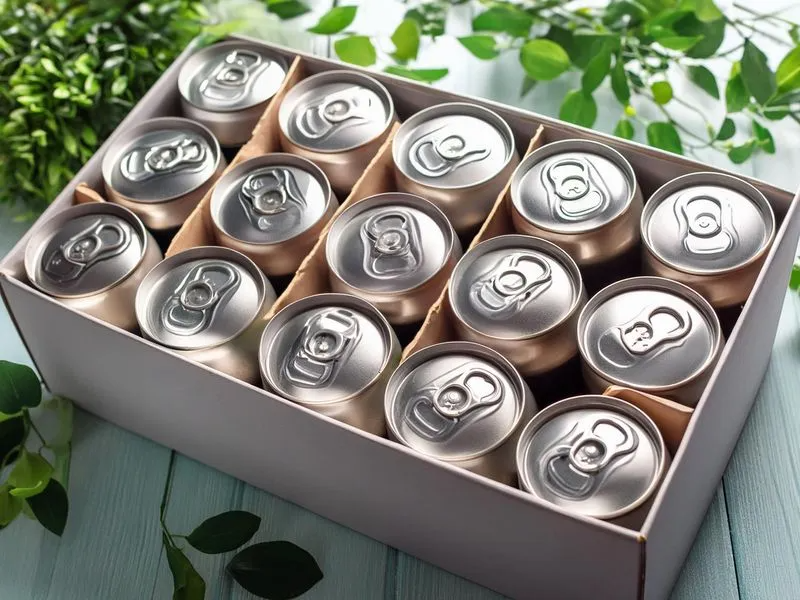Discover how retailers ship liquids and perishable items.
Shipping liquids and perishables is challenging. Products like fruits, vegetables, meat, toiletries, perfumes, and alcohol can spoil or spill during transport. This will upset your customers and possibly lead to refunds or returns.
You avoid all these headaches by choosing suitable packaging materials for your business.
In this post, you'll discover different types of packaging and learn how retailers use them to keep products fresh and undamaged. There's also a section discussing factors to consider when packing and shipping liquids and perishable items.
Let's get started.
Table of Contents
Importance of Proper Packaging for Liquids and Perishables
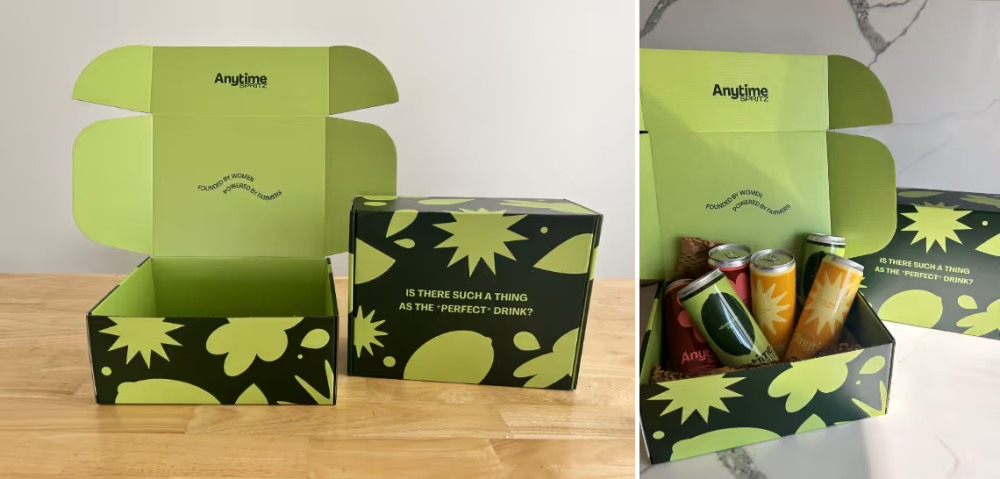

Influencer Boxes by Anytime Spritz
Why should liquids and perishables have proper packaging? Here are a couple of reasons.
Maintain Product Quality
Packaging prevents contaminants, moisture, light, and air from affecting product quality. It stops liquid products from evaporating, breaking, and spilling.
Extend Shelf Life
Use packaging to discourage bacterial growth and chemical reactions that shorten the shelf life of perishable products.
Comply With Regulations
Proper packaging allows you to comply with regulations set by the United States Postal Service (USPS) and couriers like FedEx and UPS. We'll discuss these restrictions in another section.
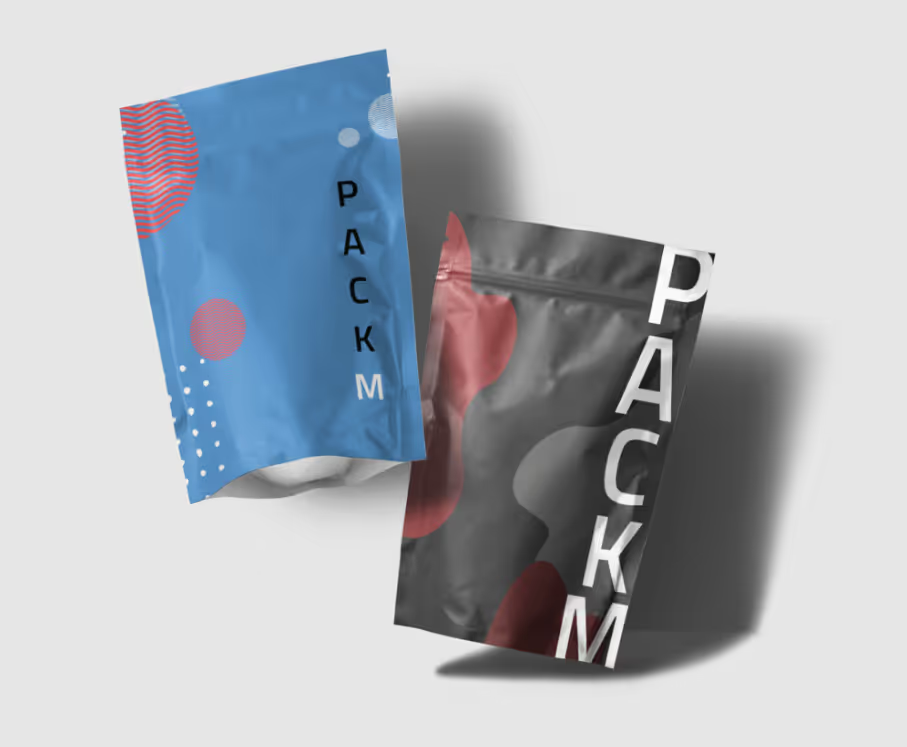

Custom Pouches
Prevent Breakage During Transport
Properly sizing your packaging materials keeps items secure during shipping. It prevents items like wine bottles, jars, and plastic bottles from rattling inside their casing.
Improve Brand Image
Customers trust businesses that consistently deliver products in excellent condition. But they won't reorder or recommend you to others if your packaging fails to keep their orders intact.
Factors to Consider When Packing and Shipping Products


Cookie Boxes by Cakes by Drea
You should keep the following in mind when packing or shipping perishable and liquid products.
Measure Your Products
Measure your products before you order packaging materials. You'll want to make sure that they'll fit perfectly. The more snugly they fit, the less likely they'll break in transit. Some printing companies pre-measure boxes to fit specific product containers like wine bottles.
Keep Products Cold (When Applicable)
You can use coolants to keep perishable products within the correct temperatures. Coolant examples include gel packs and dry ice. Wet ice is also an option. However, it may damage your shipping box if not prepared correctly.
Have Multiple Layers of Packaging
Use more than one layer of packaging. This gives you room to insert coolants and filler materials. You'll want to place your main packaging inside a shipping box to insulate products better and reduce any chance of liquid seeping out.


Add Fillers
Fillers refer to packaging materials that absorb any impact that could damage your package and its contents. These come in many forms including tissue paper, packing peanuts, bubble wrap, and packaging paper.
Double-Seal Liquids
Double-seal liquid containers to stop them from leaking. You achieve this by using sealing caps or shrink wrap sleeves. Another method you can try is vacuum-sealing containers — which also works for some perishable items.
Label Your Packaging
It's crucial that you label your packaging so couriers know that your shipping box contains liquid or perishable goods. They'll take extra precautions if they know how sensitive your products are to heat, light, and contaminants.
Best Custom Package for Each Product
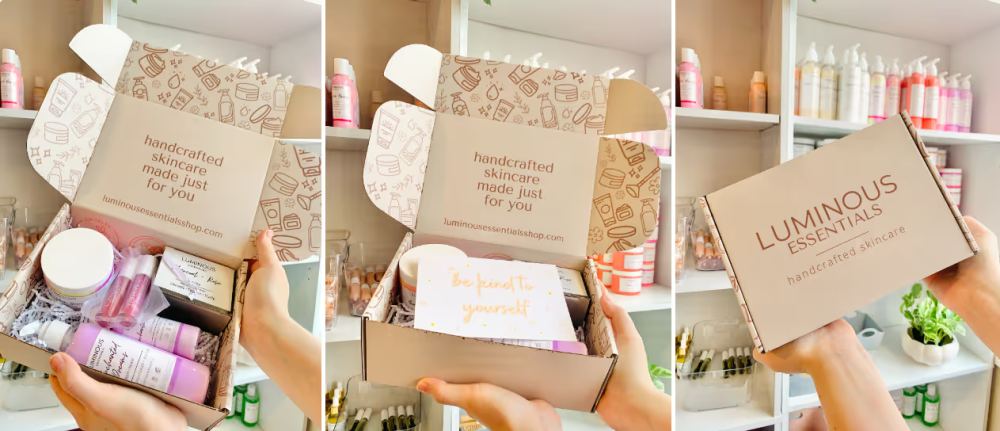

Skincare Mailer Boxes by Luminous Essentials
What types of packaging do businesses use to ship liquids and perishable items? It depends on what products they sell.
Retailers that ship refrigerated or frozen items store them in styrofoam boxes or freezer-safe plastic. Custom boxes are enough for non-refrigerated products like cosmetics and lubricants.
Here are a couple of custom packaging suggestions.
Custom Packaging
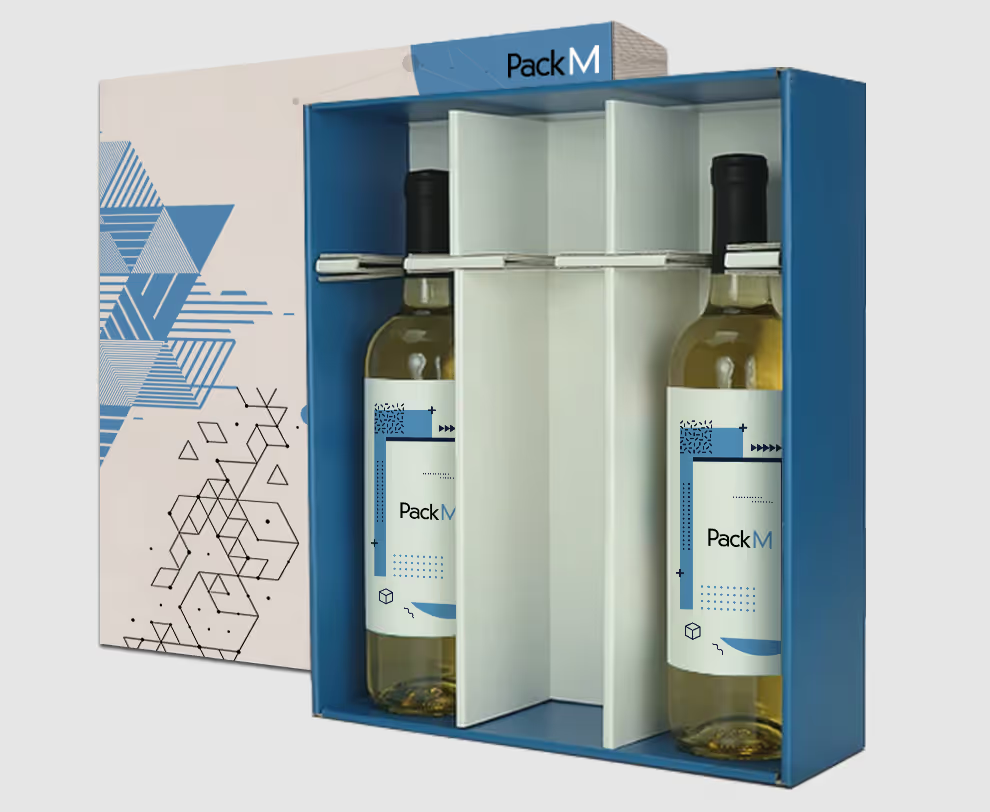

Wine Display Gift Boxes
These are the most common types of packaging used to ship liquid and perishable products.
- Mailer Boxes — These are great for smaller products like perfumes, hot sauces, essential oils, ink bottles, cleaning solutions, pet shampoos, hand sanitizers, and energy drinks. You can ship mailer boxes as is but consider placing them inside a shipping box.
- Product Boxes — These protect product containers from scratches and dust. They also keep light, air, and contaminants away. Use these to share product details like ingredients and storage instructions.
- Shipping Boxes — These are reliable for shipping perishable goods. They're strong and inexpensive. Use these to pack multiple products together to save on shipping costs. They're also great for subscription businesses like pre-cooked meals.
- Wine Display Gift Boxes — These boxes are ideal for wine bottles. However, they're also great for other bottled products like oils, beer, whiskey, rum, and vinegar.
- Pouches — These are perfect for food items you must seal to preserve their freshness. This includes nuts, jerky, pet treats, coffee, tea, trail mix, cookies, spices, protein bars, and pre-cut fruits. Customers can reseal these pouches if you add zippers.
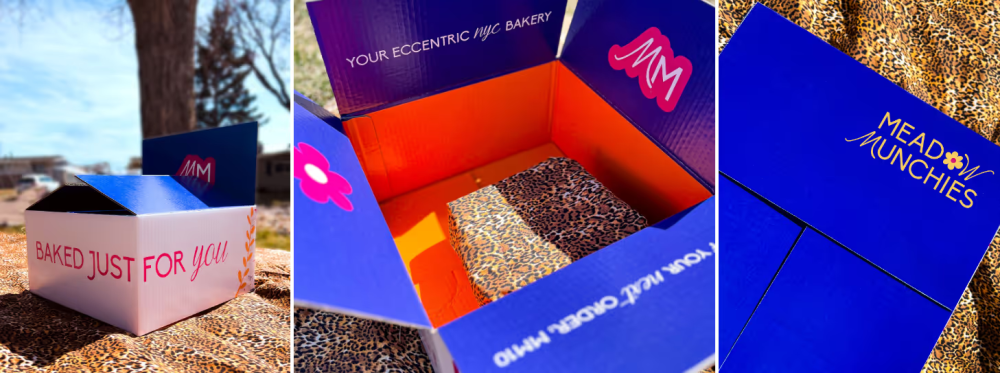

Bakery Shipping Box by Curly Cue Design Studio
Keep in mind that these boxes are customizable. You can use your own design to show the world what makes your brand so great. Configure the exact size you need and pick what kind of finish you want.
Fillers
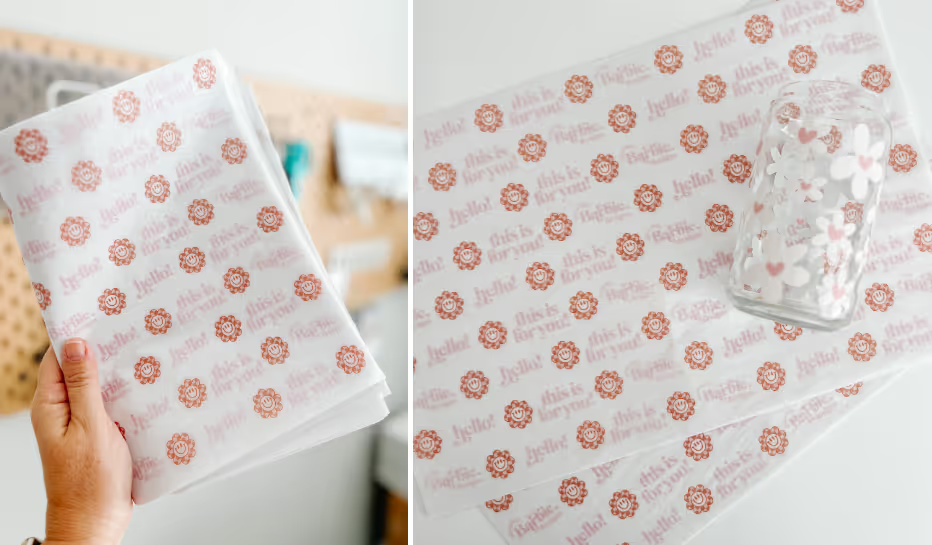

Branded Tissue Paper by Sincerely Barbie Designs
Use fillers to keep your products intact during shipping.
- Tissue Papers — These prevent liquid from spilling all over your packaging should one of your containers get damaged. You wrap these around bottles, jars, and plastic bottles before placing them inside the box. They also separate glass containers so they don't hit each other.
- Packing Peanuts — These are small cushioning elements made from styrofoam. They're known for their ability to absorb shocks and vibrations during transit. Packing peanuts are great shipping fillers but some businesses don't use them anymore because they're non-biodegradable.
- Bubble Wraps — These are plastic sheets with small air-filled pockets that cushion products during transport. You wrap products or boxes in bubble wrap to keep them safe. Again, some businesses don't use them anymore due to environmental concerns.
Rules and Regulations for Specific Products
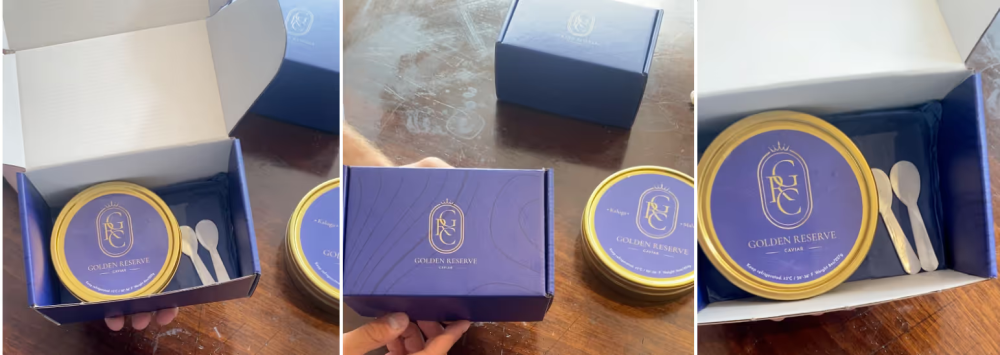

Caviar Boxes by Golden Reserve Caviar
The USPS and third-party courier companies have strict guidelines on shipping liquids and perishables. It's best to check with each one because they have their own requirements and restrictions for shipping liquids and perishable goods.
Below are a few guidelines from USPS and FedEx.
USPS
USPS guidelines on mailing fresh foods and other perishables state that you're not allowed to mail fruits and vegetables unless presented in a dry (note: not dried) condition. You can't mail perishable foods that would decompose before reaching their destination.
You can mail eggs if they are individually cushioned and packed to withstand shocks during normal Postal Service handling. Meat products need to conform to regulations set by the US Department of Agriculture.
Non-hazardous liquids have to be in proper packaging. Containers must indicate what's inside the package and have orientation arrows. Bottles must have screw caps with a minimum of one and a half turns. All non-metal containers with more than 4 ounces of liquid must be triple-packaged.
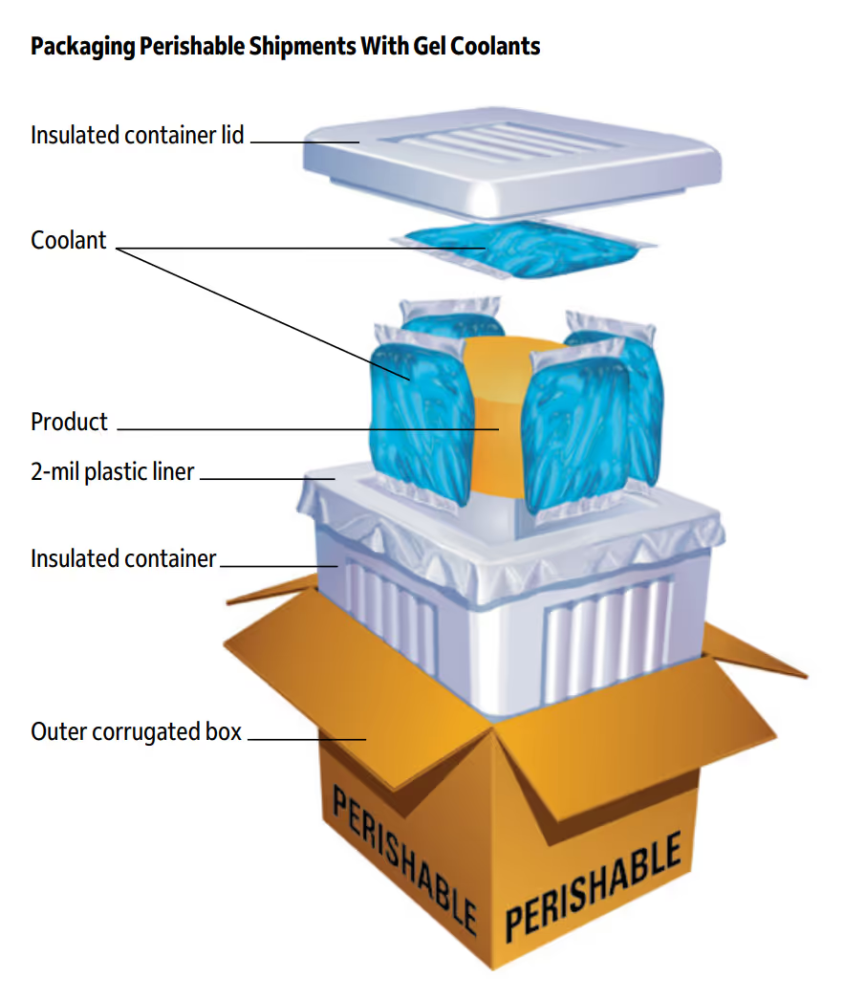

FedEx
FedEx guidelines allow you to ship perishable products. It recommends you use insulation and refrigerants to keep products fresh. Double-bag products that contain liquids using water-tight plastic.
Line the inside of the foam container with a plastic liner and absorbent material. Place containers inside a corrugated outer box and seal them with packaging tape.
Those using dry ice must provide correct identification, classification, markings, and labeling on the outer box to comply with the Air Transport Association requirements.
You can ship products with wet ice. FedEx does not recommend it though because it's not as stable as dry ice or cooling gels. Wet ice increases shipping costs because of the added weight.
If you'd like to know more about what packaging to use when shipping liquids and perishables, give us a call or use live chat to talk to one of our custom packaging experts. You can also email us at sales@packm.com
Related Posts
